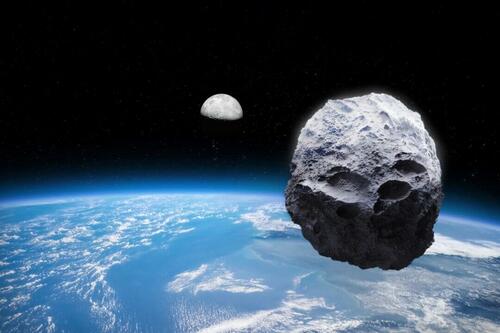Authored by Michael Wang via The Epoch Times (emphasis ours),
It appears that planet Earth has assumed babysitting duties for a minor space object that came too close to our world and chose to stay for a few weeks. The traveling object fell into Earth’s orbit in September and will remain there until late November. Rocky in disposition and roughly the size of a school bus, the object is an asteroid, yet scientists are calling it a “second moon.”

How the Earth Came to Have Two Moons
Traveling along a horseshoe-shaped path through the solar system, this asteroid is classified as a near-Earth object, or NEO. There are many NEOs in outer space. While making a flyby close to Earth, this particular object’s gravitational energy temporarily fell to negative levels, according to a study published by the American Astronomical Society. This implied that it was in Earth’s orbit.
On Sept. 29, it became official. The NEO got caught in Earth’s orbit, technically making it a second moon. It was named 2024 PT5. However, it won’t last long; the rock won’t even revolve once around the Earth before hurtling off in a few weeks.

Although technically a “moon,” the object measures only 33 feet long, roughly 345,000 times smaller than our permanent lunar satellite. Most people won’t see it, as it will be far too small for human eyes or amateur equipment to spot. Astronomers will be able to observe it using high-powered telescopes, Live Science writes.
“The object is too small and dim for typical amateur telescopes and binoculars,” study author Carlos de la Fuente Marcos, a professor at Universidad Complutense de Madrid, told Space.com. “However, the object is well within the brightness range of typical telescopes used by professional astronomers.”
So, for now, planet Earth is babysitting an asteroid, though it won’t overstay its welcome. On Nov. 25, it will depart from orbiting Earth and start its journey back into deep space, not to be seen again for decades.
Where Did It Come From?
Over the years, countless other space objects like 2024 PT5 have grazed by Earth. This NEO is said to originate from the Arjunas, a secondary asteroid belt in the solar system that aligns closely with Earth. Hoards of NEOs can be found within this cluster, and some have even visited Earth before. The latest flyby closely resembles a prior one called 2022 NX1, which orbited Earth in 1981 and 2022 before bidding farewell.
When 2024 PT5 says sayonara in November, it won’t return to greet us again until 2055.